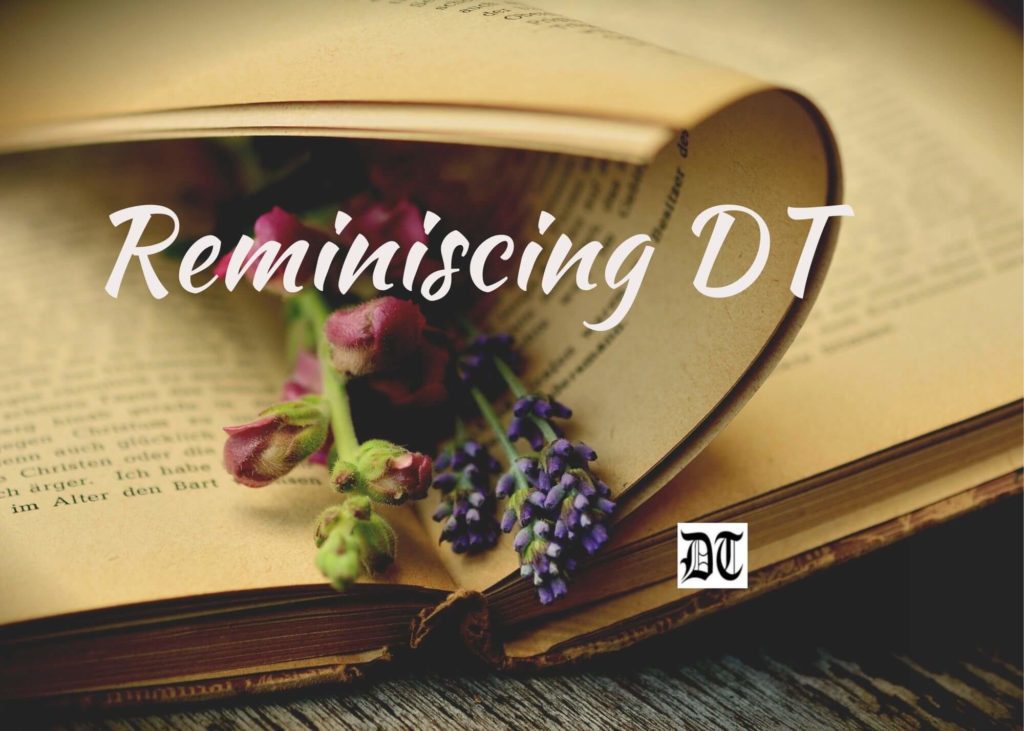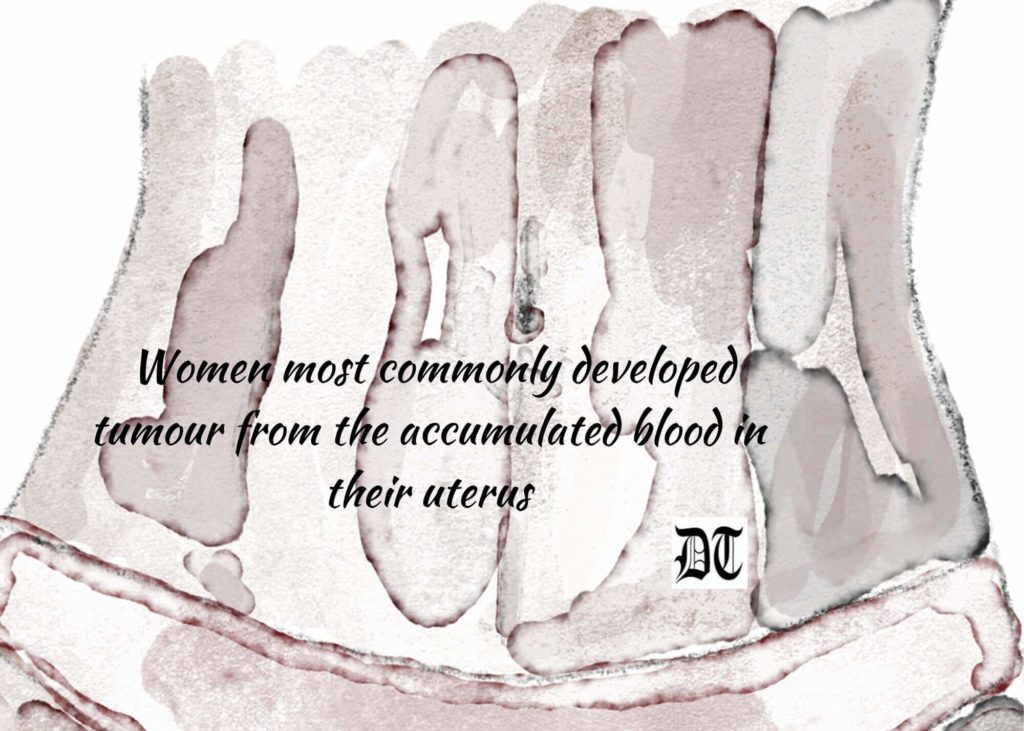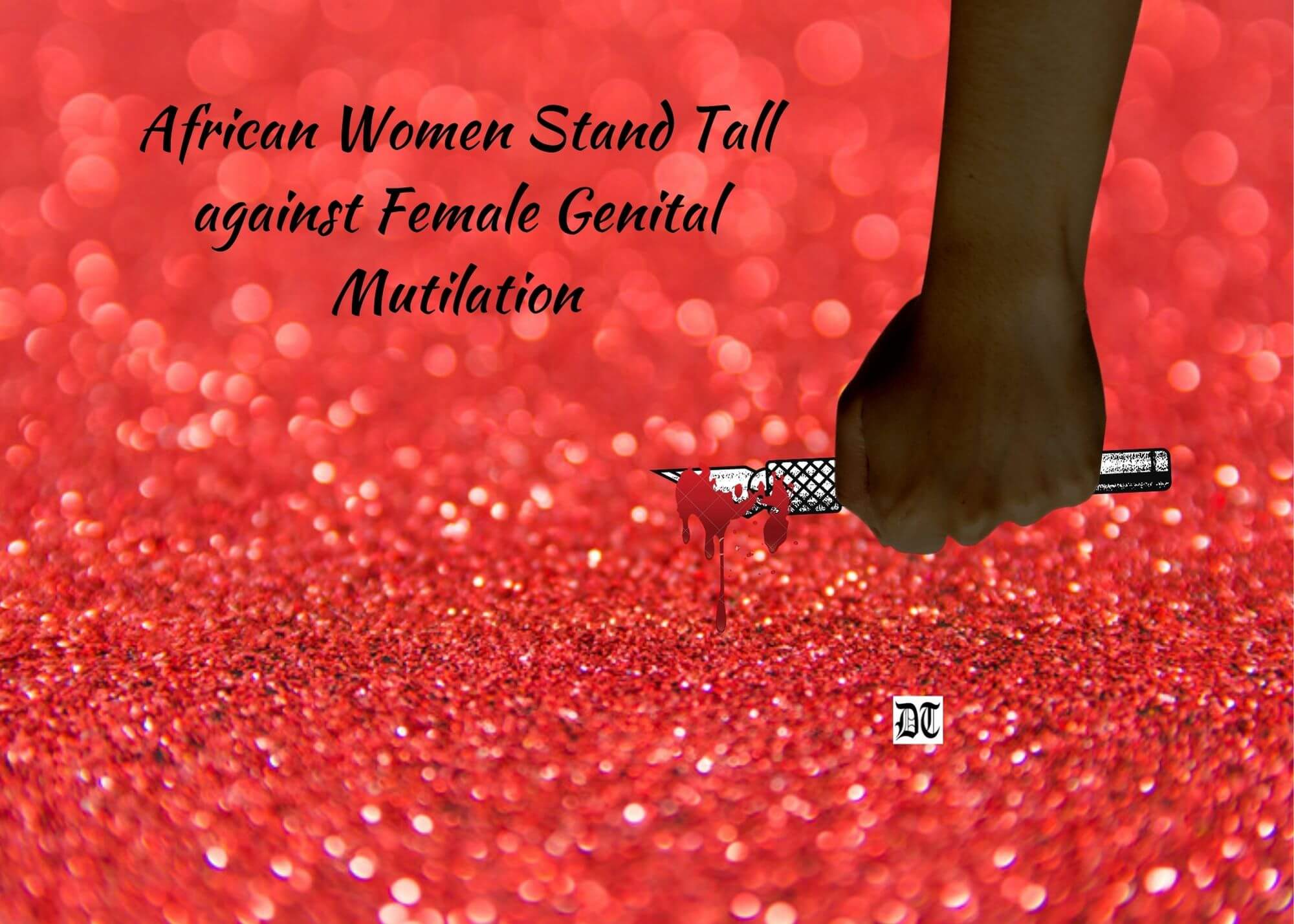Butchering girls’ private parts, cutting out healthy flesh in the name of religious ritual is barbaric. Whenever a girl or a woman gets cut, she becomes exposed to numeric infection, including HIV, which is the deadliest of all. Statistics says the places where this practice still takes place are high in HIV infected cases. Africa, where this practice is widespread, is affected with HIV the most. Thankfully, some women in Africa, who are anti-Female Genital Mutilation (FGM) activists and bringing about change, no matter how small. Every year, February 6 has been declared a zero-tolerance day for FGM, states Debjani. A Different Truths exclusive for the Special Issue on Africa.

It was a beautiful day in the land of Somali. Soraya came back from school with a sad heart. No girl in the school wanted to play with her. They call her the girl with three legs. When she asked her mother why she is called with such an awful name, she told her it’s time for her to get a gift. Soraya was delighted with the idea of getting a gift. She dreamed about her beautiful new dress she was about to receive. The next day she was not sent to school. Mom took her out, what she thought would be a shopping expedition for them two.
Her mom took her to an old building with a long dark hall way. While walking through it she felt something was not right. She asked her mom what is this place and her Mom answered this is the place where she is about to achieve her womanhood. Soraya tried to run away as she knew what was about to happen. But, she was grabbed by her neck from the back.
The next thing she remembered was being pinned on a table and a rough hand touching her down where she never been touched before. She tried to make herself free but she was forced to be lying by three women including her Mom. She saw knife being heated on a stove and there after she felt being cut down inside her body. She shuddered in immense pain but the process continued until her full genital circumcision was completed.
Soraya Mire, a social activist and cinematographer, shared her horrific life experience with the world. She works actively to stop this barbaric ancient ritual to ensure the illumination of sexual desires from a woman completely. In her award winning documentary, Fire Eyes, she openly condemned this brutality against women and demanded a ban, worldwide.
The Female Genital Mutilation (FGM) is the very end of the womanhood right at its beginning. This is a condemnable ritual practiced for centuries just to keep away women from experiencing the pleasure of sex, leaving them to be a mere object to men’s sexual need and reproduction.
Somalia, Ethiopia, Sudan are few African countries where this ritual is practiced widely. About 95% of women of this region are forced to go through this brutality till date. Fatima Naib, an online Swedish journalist of African origin and the creator of the documentary, The Cut, visited Somalia, which has the highest rate of female genital mutilation in the world to find out more about the practice. She had been told there are three types of FGMs:
1. Clitoridectomy is to remove the clitoris of a woman partially or totally.
2. An excision is made to remove the clitoris and labia of a woman partially or totally.
3. Lastly, infibulation or pharaonic type is the most hideous of all. This is to narrow the vaginal orifice with creation of a covering seal by cutting and a positioning the labia minora and labia majora with or without removal of the clitoris. After this the girl’s leg are bound together to make the covering seal happen. Just leaving a small opening to flow urine and menstrual blood out. And after marriage, the woman again has to be cut open for performing the sexual intercourse, which again cause them extreme pain.
A horrific incident of Ethiopia shook the world, when a man named Fuad, unable to perform intercourse on his wedding night because his wife, Ayisha, was circumcised at the age of eleven. He got frustrated on the next night and cut Ayisha down and bled her to death, while taking her virginity. Thankfully, this barbaric man is now locked up in jail.
About 125 million girls and women, who are been circumcised worldwide are living on this earth and another 30 million is at the risk of being cut over the next decade. In Africa and parts of Asia, this ethnic ritual is mostly practiced in the name of securing women’s virginity for their marriage, denying them of the pleasure of physical unification for the rest of their life.
Esther was 8-year-old when she was cut and had to stay away from home for a month to recover. During this period she couldn’t eat and passing urine was extremely painful. “We circumcised our girls because we love them” her mother said, “as it would be difficult for them to marry if they are not cut.” But after the horrific experience of herself, Esther says, “I would never cut my daughters as now I know the consequences.”

Professor Akotiomga Michel says he has carried out 3000 reversal operations on women who had been circumcised and it made a huge positive difference in their life. He says FGM has no benefit but horrific consequences as the women find difficult to have sex, and mensuration, and even passing urine. As the result of not getting cleaned of menstrual blood completely, the women most commonly developed tumour from the accumulated blood in their uterus.
Nice Nailantei, a 28-year anti-FGM activist of Kenya, managed to radicalise her village completely and no girls since 2012 has got circumcised there. Her partner in the movement, Doglus, a young Morang of the Maasai community succeeded in convincing the other young Morangs of the village to get married with the girls, who had not been circumcised. If a single woman can make such a difference it is possible for any other person to end this horrendous ritual.
Dontila, another FGM activist of the Pokot tribe of Kenya is working hard to demolish this practice. She managed to gather 60 girls from the neighbouring villages, who participated in a ceremony of stepping to womanhood but without performing the ritual of getting cut. She says the area is vast so it’s hard to reach to all the villages but starting with these girls fills her heart with joy. She says butchering the girls’ private parts, cutting out healthy flesh in the name of religious ritual is barbaric. Whenever a girl or a woman gets cut, she becomes exposed to numeric infection, including HIV, which is the deadliest of all. Statistics says the places where this practice still takes place are high in HIV infected cases. Africa, where this practice is widespread, is affected with HIV the most in the world.
In India, among the women of the Muslim Bohra community this practice has been going on in secrecy. Girls are circumcised just because it is a ritual, which has been practiced by their mother and grandmothers from ages. Though the ratio is lower than the countries of Africa, not only in Africa, but in progressive countries of Europe, North America, and Australia also this practice still goes on, in secrecy. In many countries this practice has been banded by the government but yet we have a long way to go and as Indians we should get active against this practice and bring a government ban on this.
Women are no one’s property. To ensure their virginity by making them go through this painful process, which causes them immense pain for lifetime is barbaric and inhuman. And the saddest part of it is that this practice has been encouraged for ages by women themselves.
It’s time to stand united against this barbaric ritual, which is never mentioned as mandatory in any religion. World always came up with numerous ways to torture a woman’s body and soul but women are the saviours of themselves and they should fight against all brutality meted out to them.
Every year, February 6 has been declared a zero-tolerance day for Female Genital Mutilation (FGM). Let’s pledge to be more vocal about this brutality against womanhood.
Picture designed by Anumita Roy, Different Truths






 By
By
 By
By
Christian Amanpur exposed FGM practice in the 90′. A human will struggle to write after reading this article. I wasn’t aware of Bohra community’s practice in India. It gave me a cold chill in the spine. This monstrosity needs to be stopped as far as human rights are concerned.
Thank you for this important article.
Regards